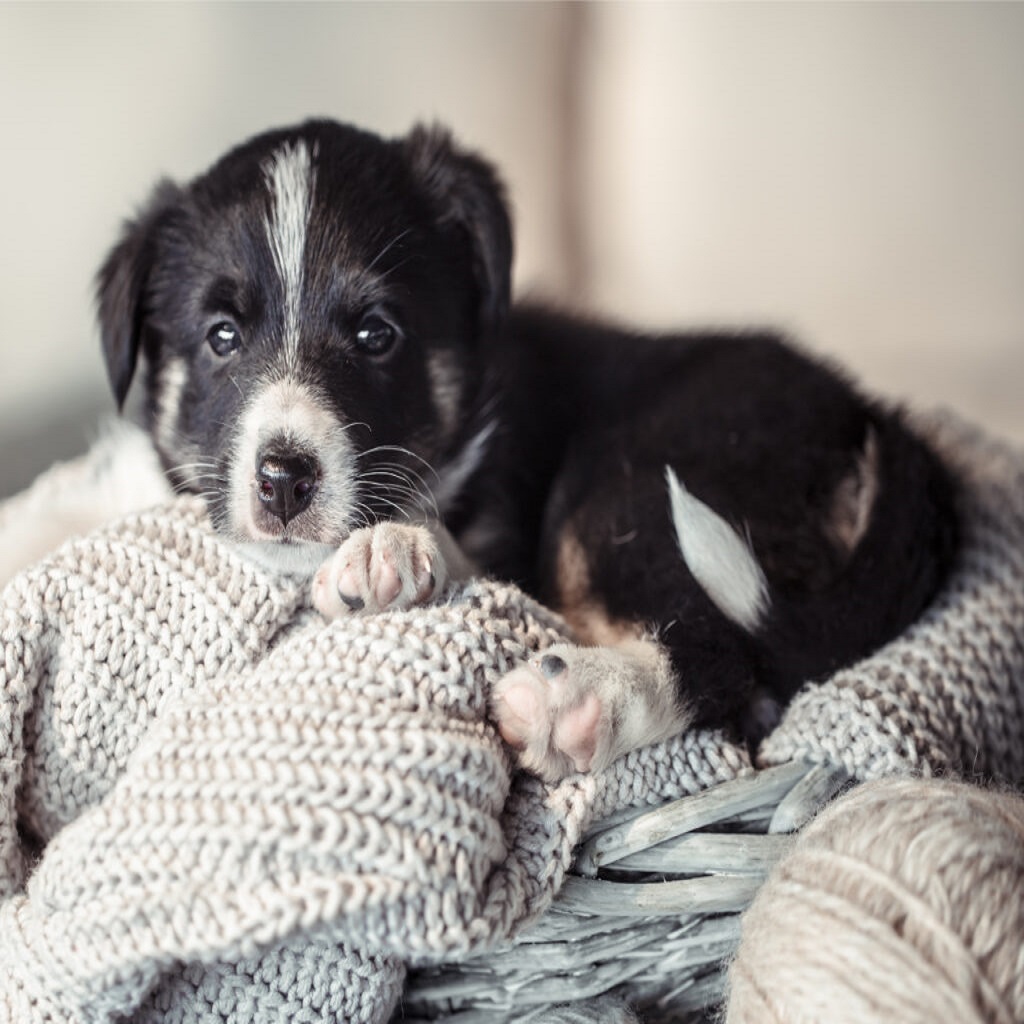
Image Credit – Hemapriya
The joys and frustrations of new puppies go hand in hand, creating an exciting yet sometimes overwhelming journey for pet parents. From their adorable faces and boundless energy to the sleepless nights and chewed-up shoes, raising a puppy is a mix of love, patience, and challenges. While the joys often outweigh the struggles, it’s important to embrace both sides of puppyhood as part of the bonding process.
The joys and frustrations of new puppies

Visions of fun and frolic dance in our heads when we decide to bring a puppy into the family, but those visions can deteriorate into frustration for those who are unprepared for the potential difficulties of puppy training and adjustment to family life.
There’s no doubt that the first few weeks with a new puppy can be exasperating. That tiny bundle of fur that was soooo friendly at the breeder’s home, the kennel, the pet store, or the animal shelter has some behaviors that drive people crazy. It’s little consolation that these behaviors are normal for dogs; what matters is that the housetraining go smoothly and relatively quickly, that the nipping of children be held to a minimum, and that chewing on furniture and clothing be stopped or prevented.
It’s important to remember that puppies are always learning about their environment and their people, but it can take time for learning to crystallize into acceptable behavior patterns. For example, if a 10-week-old puppy doesn’t have accidents in the house, it could well be that the owner is trained to read puppy signals and get the little guy outside at the proper time. Most puppies are housetrained by four months of age, but it may take supreme diligence on the part of owners to prevent accidents until that time.
The first 16 weeks of a puppy’s life are critical in determining how he will fit into his family. Early socialization from birth to purchase at seven or eight weeks cannot be replaced later; a puppy that misses out on play time with Mom and littermates or early gentle handling by people can develop behavior problems no matter what the family does to prevent them.
Children and puppies
Children and dogs are a natural combination, but children should always be taught to be gentle with puppies and parents should always supervise interactions.
All children past crawling stage can participate in puppy care in some fashion. A toddler can pick up puppy toys and put them in a box, help straighten puppy bedding, and learn to keep his own toys out of range of puppy teeth. A pre-school child can do these things and help fix puppy meals and accompany Mom and puppy to the veterinary clinic. A kindergartner can help teach the puppy to sit before he gets a treat and can help with leash training, and an older child can teach puppy tricks and actively participate in good manners training under adult supervision.
A few cautions, however:
- No hugging. A puppy held close to a child’s face can accidentally scratch or nip if it becomes frightened and tries to get away.
- No dragging. Kids should never be allowed to drag a puppy around by the leg, the collar, or a leash.
- No feeding from the table. Puppies and kids should be separated when food is around so puppies don’t become beggars and thieves and kids don’t tease pups with tasty morsels.
- No spanking. Children should never spank a puppy for bad behavior. (Of course, adults should not spank puppies either!)
Same breed, second time around
People often hark back to the dogs of their childhood when choosing a family pet, and so look for another dog of the same breed or type and get a rude awakening when the newcomer isn’t a clone of Lassie or Pal. Dealing with a nippy dog when you remember your old family Collie as perfect or teaching a dominant puppy to obey when the Buddy of your early years was a perfect gentleman can definitely put a kink in the relationship.
It helps to remember that, while dog breeds have definite ideal temperaments and behavior patterns, individual dogs fit the patterns in individual ways. Thus a Miniature Poodle can be bright, yappy, and active to the point of hysteria or can be quiet and calm and eager to please. A breed standard may describe breed character as aggressive to other animals, but an individual dog may get along fine with other family pets and with dogs in public. The opposite could be true as well: an individual dog of a generally friendly breed can be either shy or dominant, depending on its genetics and early handling.
The joys and frustrations of new puppies : Fun is the key
Puppy training and socialization should be fun for both owner and dog. Puppies can be taught to sit, lie down, and come for rewards. Even eight-week-old puppies can sit for their dinner or treats and lie down to be groomed. Puppies that resist can be taught with persistence and consistency on the part of all family members. It does no good if Mom requires puppy to sit before meals if Dad doesn’t follow through or if Susie slips Fluffy a bit of bacon from her breakfast plate.
Physical handling is seldom necessary when teaching puppies to sit or lie down if you use a treat and a gentle voice. Actually, you can teach Sparky to sit without touching him or giving a command; just show him a treat or lure him to his dinner spot and hold the food above his head so he has to look up to see it. If he parks his rear in order to look up, tell him “Good boy!, Good sit!” If you hold the treat too high, he’ll jump to get it, so keep it just out of reach. If he backs up instead of sitting, let him sniff the food, then move it a bit higher so he has to look up. If he still backs up, work him against a wall.
Puppies and holidays
If you bring a pup home for the holidays …
- be sure to provide him with a crate to serve as a safe place. It should be away from any hustle and bustle and food temptations.
- stick to puppy food for the newcomer; table food, especially rich table food, is likely to upset his stomach.
- keep him away from the Christmas tree so he can’t break or steal ornaments, burn his nose on the lights, nibble on garlands, or tear through gift packages.
- make sure he gets outside to relieve himself in a timely fashion. Set an alarm if you need a reminder.
- keep house plants out of reach
- don’t leave perishables on the coffee table.
- don’t let him get over-excited.
- don’t let over-excited children give him grief.
The joys and frustrations of new puppies go hand in hand, creating an exciting yet sometimes overwhelming journey for pet parents. From their adorable faces and boundless energy to the sleepless nights and chewed-up shoes, raising a puppy is a mix of love, patience, and challenges. While the joys often outweigh the struggles, it’s important to embrace both sides of puppyhood as part of the bonding process.
Frequently Asked Questions
What are the common joys and frustrations of new puppies?
The joys and frustrations of new puppies often include endless cuddles, playful moments, and bonding, alongside challenges like sleepless nights, chewing, and house training.
How can pet parents balance the joys and frustrations of new puppies?
The best way to handle the joys and frustrations of new puppies is by being patient, consistent with training, and remembering that the difficult phase is temporary.
How can I manage the joys and frustrations of new puppies?
With patience, consistent training, and lots of love, you can overcome the frustrations and enjoy the rewarding experience of raising a puppy.






